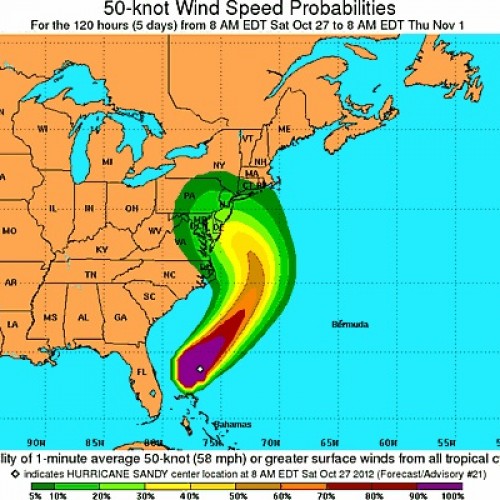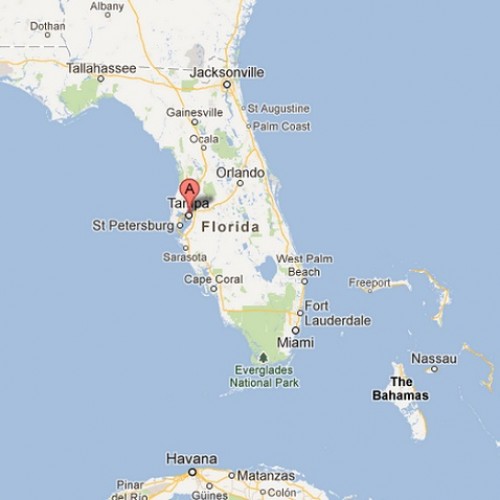National Hurricane Center: Hurricane Sandy Path Remains Steady, Predicted to Slam New York City
The National Hurricane Center briefly downgraded Hurricane Sandy to a Tropical Storm on Saturday morning, only for it to be re-classified as a hurricane just hours later.
The entire Eastern Seaboard has its eyes on Hurricane Sandy as it continues its northward projected path. New York City, Washington DC and the entire U.S. east coast is on high alert as the hurricane continues to grow in size.
Some have warned that Sandy could form into an "unprecedented" storm, and millions are expected to be left without power for days or even weeks as Sandy slams the coast early next week.
Marshall Moss, AccuWeather forecaster, has told the NY Daily News: "This storm will affect millions and cost billions. This is really going to be a huge storm and something unprecedented in meteorological terms."
New York City Mayor Bloomberg has declared a state of emergency, and the MTA is preparing to enforce a complete shut down of the subway and buses throughout the city from as early as late Sunday.
NYC officials have also began preparing for evacuating about 375,000 inhabitants in low-lying areas of the City and the surrounding areas.
In an update on Saturday morning experts confirmed that Sandy had shown no signs of changing its course.
Dennis Feltgen, of the National Hurricane Center, told the Daily News, "The storm is so large the impact is going to be felt over hundreds of miles and many states at the same time."
A state of emergency have been declared in Maryland, NYC, Pennsylvania, Virginia, and Washington.
Powerful winds, heavy rains, and extreme tides are predicted for the coming days, as well as heavy snow in some areas.
Extreme storm surges will also be one of the potentially most destructive features of the storm.
"It's going to be a long-lasting event, two to three days of impact for a lot of people," said James Franklin, head forecaster at the National Hurricane Center.








